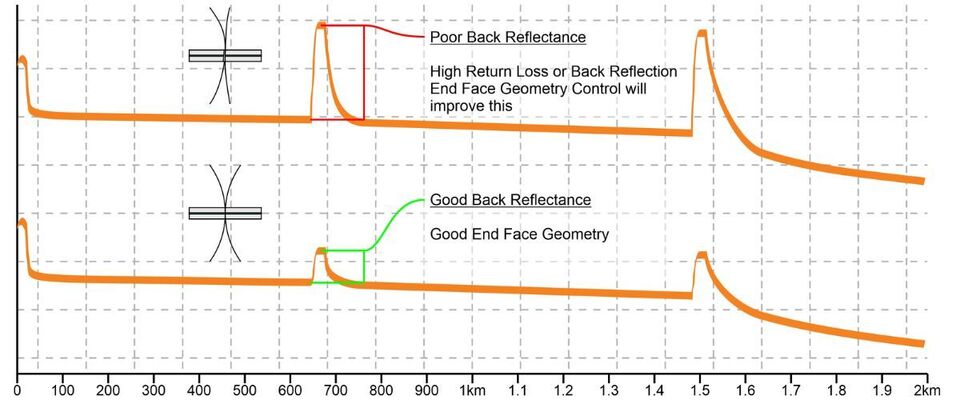How Poor Connector Polish hurts your fibre optic system
pdf, 1.358 MB
Fibre optic networks thrive on clear, efficient light transmission. Yet, a seemingly minor detail, the polish quality of connector ends, can have a significant impact. Let's delve into the domino effect of Insertion Loss (IL) / Return Loss (RL) caused by poor polishing, especially when multiple such connectors are used in a system.
Imagine a bumpy road with potholes. That's what a poorly polished connector looks like to the light travelling through it.
Poor Insertion Loss (IL): Light scatters off imperfections, leading to higher IL readings during testing. This translates to weaker signal strength when the connector is installed.
Poor Return Loss (RL): Poor Return Loss per connector means increased reflection thus causing more signal interference between the light going through it and the light reflecting back.
The below shows what the trace of a poorly polished connector may look like:

Below is what the trace of a well polished connector may look like.

Now, imagine a network with several poorly polished connectors:
Proper polishing techniques and rigorous inspection ensure:
Prioritising proper polishing and inspection of your fibre optic connectors to prevent the domino effect of rising insertion loss, to ensure your network operates at peak performance.
For better control of your network, wherever possible, factory-controlled components should be used as these provide more consistent results. It is recommended that networks are installed with factory-made pigtails, that are fusion spliced into position, which give known losses to the overall system, which makes it easier to plan and budget for prior to installation.
Additionally, don’t forget to Inspect Before You Connect as connector cleanliness is essential housekeeping.
How Poor Connector Polish hurts your fibre optic system
pdf, 1.358 MB